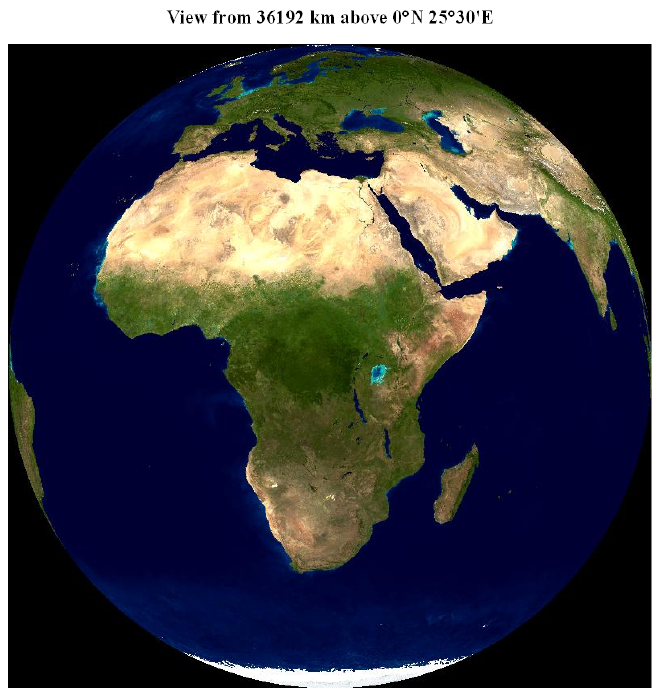Wikipedia describes a geosynchronous orbit (GSO) as an orbit around the Earth with an orbital period of one sidereal day, intentionally matching the Earth’s sidereal rotation period (approximately 23 hours 56 minutes and 4 seconds).
The synchronization of rotation and orbital period means that, for an observer on the surface of the Earth, an object in geosynchronous orbit returns to exactly the same position in the sky after a period of one sidereal day. Over the course of a day, the object’s position in the sky traces out a path, typically in the form of an analemma, whose precise characteristics depend on the orbit’s inclination and eccentricity.
Geostationary Orbit
A special case of geosynchronous orbit is the Geostationary Earth Orbit (GEO) which is a circular geosynchronous orbit at zero inclination (that is, directly above the equator). A satellite in a geostationary orbit appears stationary, always at the same point in the sky, to ground observers. This means the ground station antennas do not have to move, but can be pointed permanently at the fixed location in the sky where the satellite appears.
Qatar’s Es’hail 2 geostationary satellite will carry amateur radio transponders that could link amateurs from Brazil to India. The satellite is expected to launch by the end of 2018 and will be positioned at 25.5 degrees East.
Es’hail 2 will carry two “Phase 4” amateur radio transponders operating in the 2400 MHz and 10450 MHz bands. A 250 kHz bandwidth linear transponder intended for conventional analogue operations and an 8 MHz bandwidth transponder for experimental digital modulation schemes and DVB amateur television.
Linear transponder 2400.050 - 2400.300 MHz Uplink 10489.550 - 10489.800 MHz Downlink
Wideband digital transponder 2401.500 - 2409.500 MHz Uplink 10491.000 - 10499.000 MHz Downlink
Further information on the Es’hail 2 satellite
http://amsat-uk.org/satellites/geosynchronous/eshail-2/
Sources:
Wikipedia http://en.wikipedia.org/wiki/Geosynchronous_orbit
What Is a Geosynchronous Orbit? http://www.space.com/29222-geosynchronous-orbit.html
NASA Three classes of orbit http://earthobservatory.nasa.gov/Features/OrbitsCatalog/page2.php
ARRL http://www.arrl.org/news/dayton-hamvention-2015-day-1-big-crowd-some-rain-satellite-news
AMSAT-NA Opportunity for Rideshare to Geosynchronous Orbit http://www.amsat.org/?p=4058

